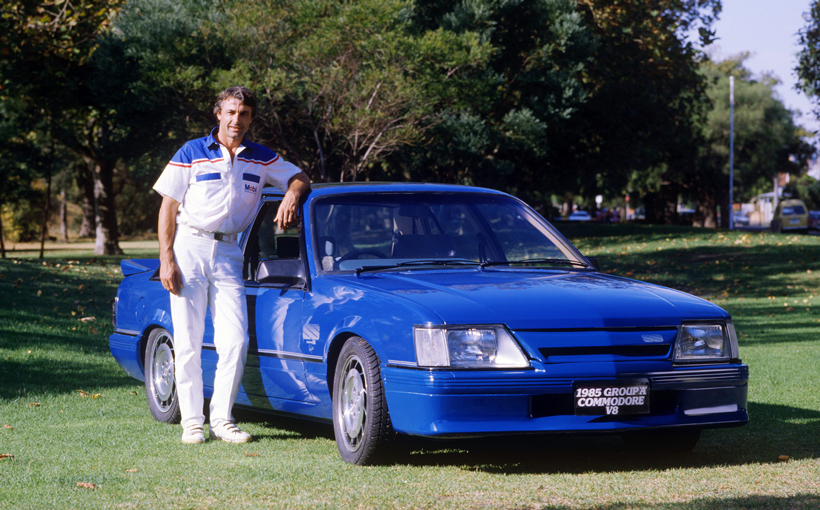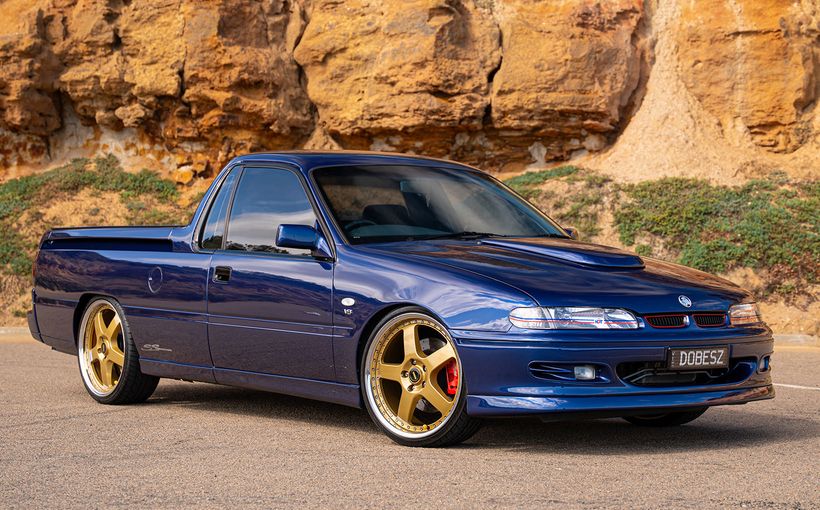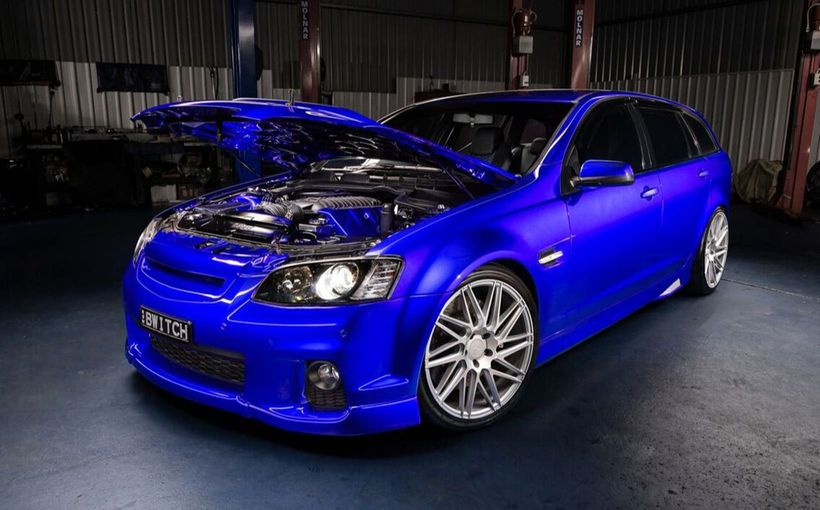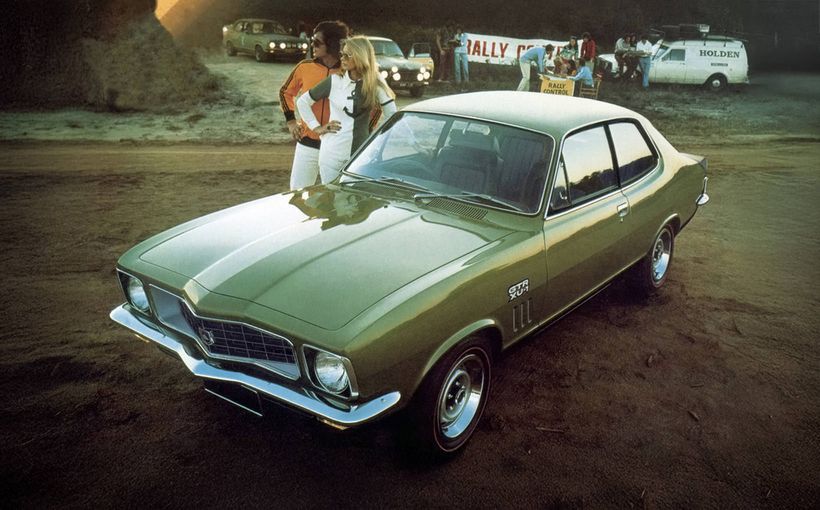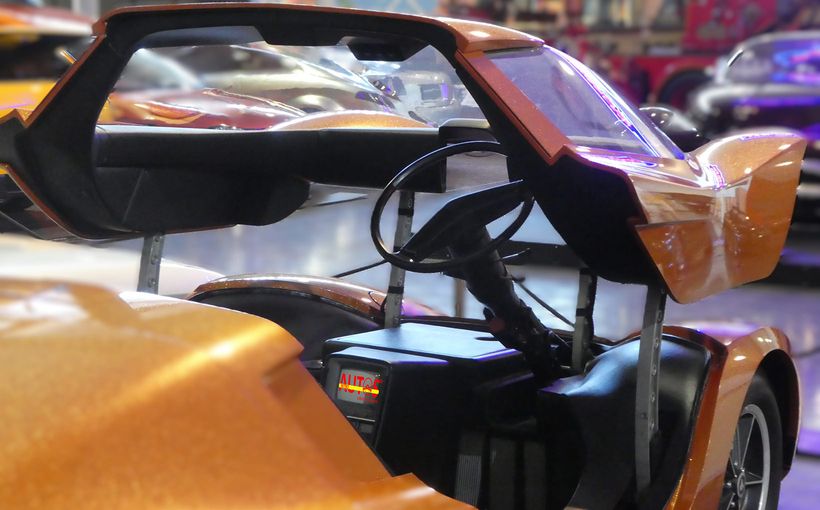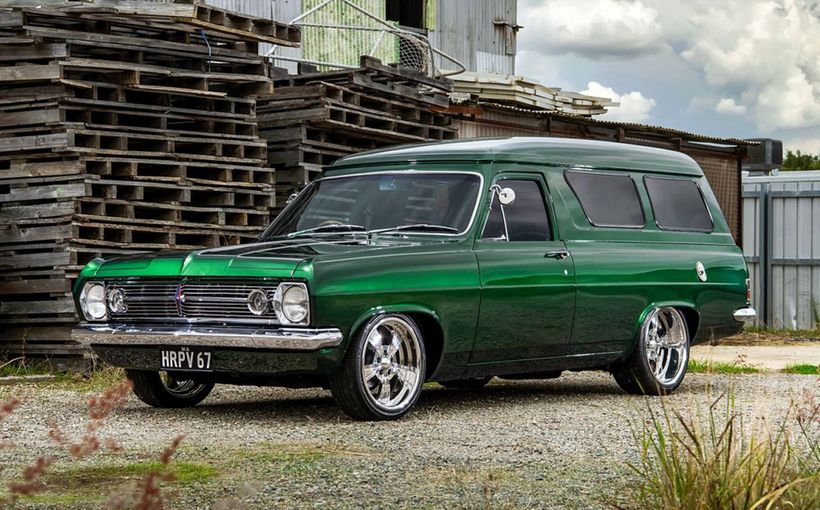VK Commodore: slick new glasshouse and fuel-injected six

The VK range, launched in March 1984, was the first serious rework of the Commodore since its introduction on 26 October 1978. While the VK retained the platform and key dimensions of its three predecessors (VB, VC and VH), its new six-light (the traditional English term for the number of side windows) glasshouse made it look bigger not only on the outside but also from the inside looking out. New front and rear styling, extensively revised interiors, greater differentiation between the flagship variant and the lesser models, and new names completed a major facelift.

Virtually from the day of the huge national media launch organised by the newly appointed director of public affairs, Evan Green, Ford Australia’s marketing gurus cleverly attacked the Commodore by calling it a C-sized (in Ford Speak) car rather than a D-sized offering like the Falcon and Valiant. Quite a nice car, maybe, but a direct rival not for our Falcon but our Cortina. You get the drift.
Ford Australia tried to create the perception – and largely succeeded – that the Commodore was too small to be shopped against the Falcon. The following year Mitsubishi Australia entered this conversation by releasing its Sigma replacement, the locally designed Magna with those extra four inches of width stitched into the middle. The four-cylinder Magna had slightly greater interior width than the six-cylinder (and V8) Commodore. Now, customers, what were those priorities again?
While an all-new bigger body was still years into the future – if it was ever going to happen at all, so parlous were GM-H’s finances looking in the early 1980s – Holden’s designers had to take the existing car to the max. This is the best way to understand the VK and its VL successor.

The presskit for the VK contained a statement from managing director Chuck Chapman, in which he was surprisingly frank about Holden’s woes:
What many people didn’t realise was that at the time of our greatest difficulties in the past year or so, we had a highly talented body of engineers working flat out on the very advanced new systems you see in the new VK range. At the same time we were going through the agonising process of rationalising our workforce, making hard decisions about future plant operations and trying to maintain sales in a declining market. I don’t think too many people understand what a big company goes through at a time like this in an industry which must be exploring new and expensive frontiers of technology several years ahead while simultaneously undergoing the immediate trauma we faced.
If anything, Chapman’s tense is misleading here: at the time of the launch those stresses were huge with Holden directors about to plead with their bosses for the requisite money to invest in the planned VN. They got their way in January 1985. Even so, on 24 January 1986 Chapman had to report to the GM Executive Committee that the company was no longer viable as a manufacturer under the existing business plan. General Motors came to the rescue and on 3 December of that year Chapman reported to the media:
The money from General Motors has released us from a burden of debt we could never have earned our way out of.
So the wide-body VN got the go-ahead and, as it turned out Holden would have three-plus decades more of local manufacturing. But back in the 1981-82 time frame, while striving to update the Commodore significantly, frantic efforts were still being made to cut costs.

In this stressful context, the initial plan was to reserve the six-light design for the premium variants. But a shrewd young marketing executive, Ross McKenzie, had a better idea. His idea was to give all VKs the new look and to replace the old ‘S’, ‘SL’ and ‘SL/E’ with actual names. So, while it may have been easy for me at the time to wonder in print about why they had named the new topline version after a somewhat seedy port in France, it was even easier to appreciate the soundness of Ross McKenzie’s thinking. So we got ‘SL’ as the baseline, then‘Executive’, ‘Berlina’ (perhaps even stranger than ‘Calais’, being merely a translation from the Italian for ‘sedan’) and ‘Calais’.

Equally clever was McKenzie’s idea to call the volume fleet model the Executive and equip it with power steering as standard. From 1965 through until about this time, Ford Australia usually had a strong advantage in marketing nous, but McKenzie did much to close the gap. Any customer who sampled a manual steering XE Falcon and then a Commodore Executive could not have failed to prefer the Holden and it took Ford a couple of years to make power assistance standard across the Falcon range.
Mechanically, the biggest news was the introduction of the latest Bosch LE-2 electronic fuel injection on the venerable 3.3-litre six. The old 202 had been around in that capacity since the HQ Holden of July 1971. It got the odd tweak along the way but was underpowered and uneconomical and well past its use-by date even before the VK thrust its way through the traffic. Indeed, this engine could trace its ancestry straight back to the EH: two decades is a long time for an engine to go without major change.
In its VK Commodore injected guise – called uncharismatically ‘EI’ – this trusty if uninspired engine reached its peak of development, confounding critics with its newfound vigour in combination with impressive tractability, fuel economy and smoothness.

Not only was this reworked six (with 106 kW at 4400 rpm and 266 Nm at 3200 rpm) easily the equal of FordAustralia’s 4.1-litre EFI unit (that is, in the much lighter Holden), but it literally made the once vaunted 4.2-litre V8 redundant. This was in marked contrast to Ford’s intention that that the EFI six would satisfactorily replace not only the underdone 4.9-litre (302) but also the mighty though thirsty 5.8 (351). Nobody seemed to miss the 4.2. Besides, the 5.0-litre V8 continued in production. Chalk one up to Holden.
The 2.85-litre six was a second VK casualty, so that the carbureted 3.3 became the new base engine. By applying an electronic management system and a set of initials – ‘EST’ for Electronic Spark Timing – to this engine, Holden’s extracted better economy and more performance. As well as a little extra marketing.
But the EI was huge Holden news.
An interesting contrast was immediately obvious to industry insiders. Ford Australia’s marketing department maximised the sizzle of, firstly, the Alloy Head and, secondly, the EFI application. The Falcon got optional EFI a year before the VK drove into town. And what a splendid visual presentation the engine bay looked, all shiny alloy and tidy plumbing. The Ford engineers had developed gorgeous cast alloy manifolding to inject (if you like!) a bit of BMW into Broadmeadows.
Holden took a different route. Its engineers developed a special extractor exhaust system, revised cylinder head and new camshaft profile to capitalise on the potential that came with state of the art injection. The result was that a Calais automatic could run the 400 metres fully two seconds quicker than its carbureted predecessor, at 17.5 seconds. But the EFI Falcon was barely a second quicker, largely because unlike Holden the carburettor was a dual-threat Weber. In this sense, then, Holden’s clever marketing was of the catch-up variety!
And that catch-up was from a very rearward position. Even though the injected six got 27 per cent more torque and 15 per cent more power, it was still behind some rivals. For example the 2.5-litre Alfa Romeo V6 fitted to the GTV6 coupe and later in 1984 to the 90 sedan had 117 kW of power to the Holden’s 106 and from 800 cc less engine!
And the beancounters weren’t going to allow money to be spent prettying up the engine bay, so the desirable injected six got nasty painted rocker covers and no loving attention to detail. Holden hid its brilliant engineering away from prying eyes.Perhaps the assumption was that nobody looked under the bonnet any more. Wrong! Almost the first thing many owners do is open the bonnet of their new car to show admiring friends. The people at Campbellfield were smart enough to know that even though 63 per cent of XEs were sold into fleets, even those who only ‘owned’ their cars for work many still took pride in them.

The rest of the VK news was equally mixed. Those new plastic bits that did so much to make the car look new suffered from appalling fit and finish. In general, the General’s paintwork was poor. Grit was an issue and so was a lack of lustre, especially on the metallics. This is not to say that the finish on other Australian cars was brilliant – far from it; just that the Commodore’s was the worst.
It was particularly unfortunate that the paintwork was so dull because much of the palette was anything but – Cerulean, Spindrift, Coral, Cedar, Copper and Brandy.
Then there was the new instrumentation. The Calais got an impressive digital display quite similar to the arrangement Alfa Romeo would showcase in its 90 sedan six months later at the Turin Salon. This was great while it worked but expensive when it failed. The lesser variants got nasty kiddy car style instruments in square housings, a retrograde step if ever there was one – change for the sake of change.
There was never any doubting the Calais’ flagship status. As well as the digital dash and plush velour upholstery, it got a Citroen-esque single-spoke steering wheel. The V8 was optional on all variants and, back in 1984, a V8 Calais in Brandy (one of the metallics that seemed brighter than most of Holden’s efforts at the time) with the optional Howe leather interior and those smart new alloys was a cool customer indeed.
Dynamics were mixed. While the motoring media continued to display a bias towards the Commodore over the Falcon, it equally continued to be the case that the Holden’s great driver appeal diminished as conditions deteriorated. It lacked the Falcon’s wide track and its rear axle was not located as well as the Ford’s where Mr Watts’s linkage did sterling service. If anything, the familiar and notorious Commodore tendency to rear roll steer was worse on VK than previous models. I did note at the time that VK handling seemed to vary a little from one example to another. Call that poor quality control, too!
The VK brought plenty of customers back home to Holden. Ross McKenzie’s modern marketing thinking could be seen in the detail. Consider that new radiator grille with its heavy horizontal slats. VK luxury was denoted by where the badge was located on the three-slat grille. The SL got its badge on the top slat, the Berlina’s was in the middle and the Calais badge sat on the bottom bar as if to lower the visual height of the car.
There was more. We were meant to see the Calais as a model in its own right rather than a Commodore Calais as its predecessor had been a Commodore SL/E: once you let those marketing dudes get their manicured hands over the details, there’s no stopping them!
They did have one good reason for attempting to set the Calais distantly above other Commodores. One of those tough decisions Chapman and his team had made was to shut down the Acacia Ridge plant in Brisbane where the Statesman/Caprice was manufactured. Soon the six-light Calais would not only have to challenge the Fairmont Ghia but also the Fairlane/LTD. At least it could be specified with 5.0 litres worth of good old Aussie grunt!

The wagon was less visually different than other VK variants. Practical though it was, the fact that it shared the sedan’s wheelbase made it seem much smaller than its Falcon rival.

Peter Brock and his HDT operation made a pretty fair contribution to the VK’s performance presence. The factory SS was the starting point with Group One, Group Two and Group Three options, of which the latter was the most plentiful. Some standard SS cars got most of the Group Three treatment and I owned such a car (SS 2981). Then came the Formula Blue Group A to homologate the Commodore SS for the inaugural (and only) World Touring Car Championship and this is easily the most collectible and distinctive of the HDT VK offerings, although the up-spec Director variant is also especially desirable.

When the VB Commodore arrived, the old Holdens lived on beneath the new panels. Engines and transmissions were mostly as seen in the Kingswood/Premier and Torana. The VK was really the last Holden to retain such a direct link back to the earliest days of Australia’s Own. The 3.3-litre six was a development of the engine which made its debut in the spring of 1963 in the EH Holden. Its VL successor got another facelift but, more significantly lost the Holden six and the three-speed Tri-Matic automatic transmission in favour of a Nissan engine and electronic four-speed automatic gearbox.

In summary, theVK amounted to a great attempt by Holden to regain lost competitiveness against the Falcon, much of which was more a matter of perception than reality (but perceptions are almost everything). The car had lots of appeal but was let down by lacklustre quality and clumsy interior treatment on the lesser variants. Nowadays, the failings are more than outweighed by the VK Commodore’s status as a significant Australian classic. If you can get your hands on one, lock it away as a memory of the kind of country Australia was during its automotive manufacturing days.


